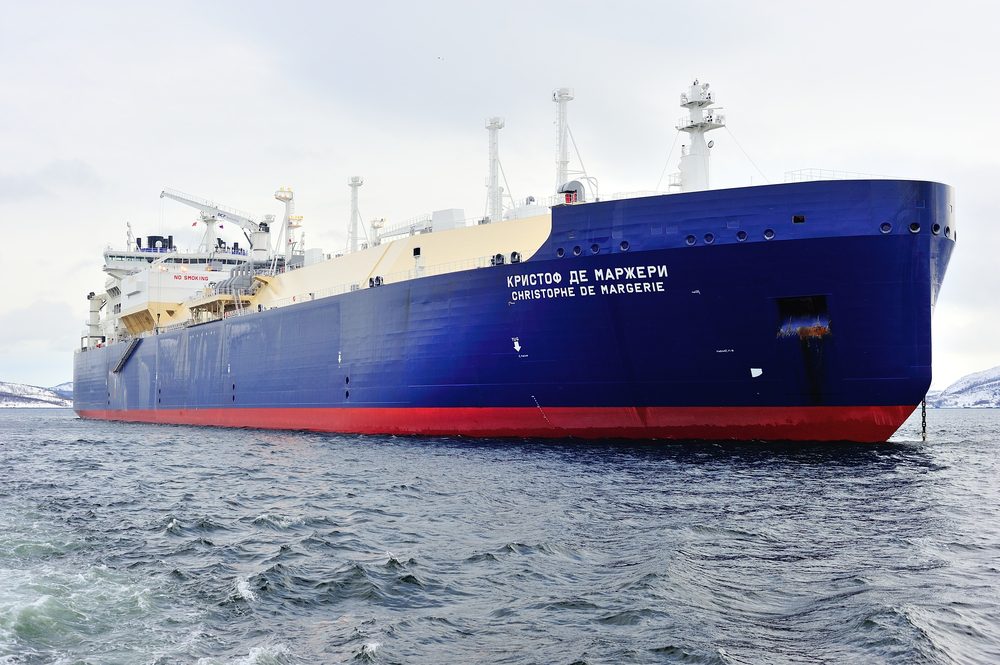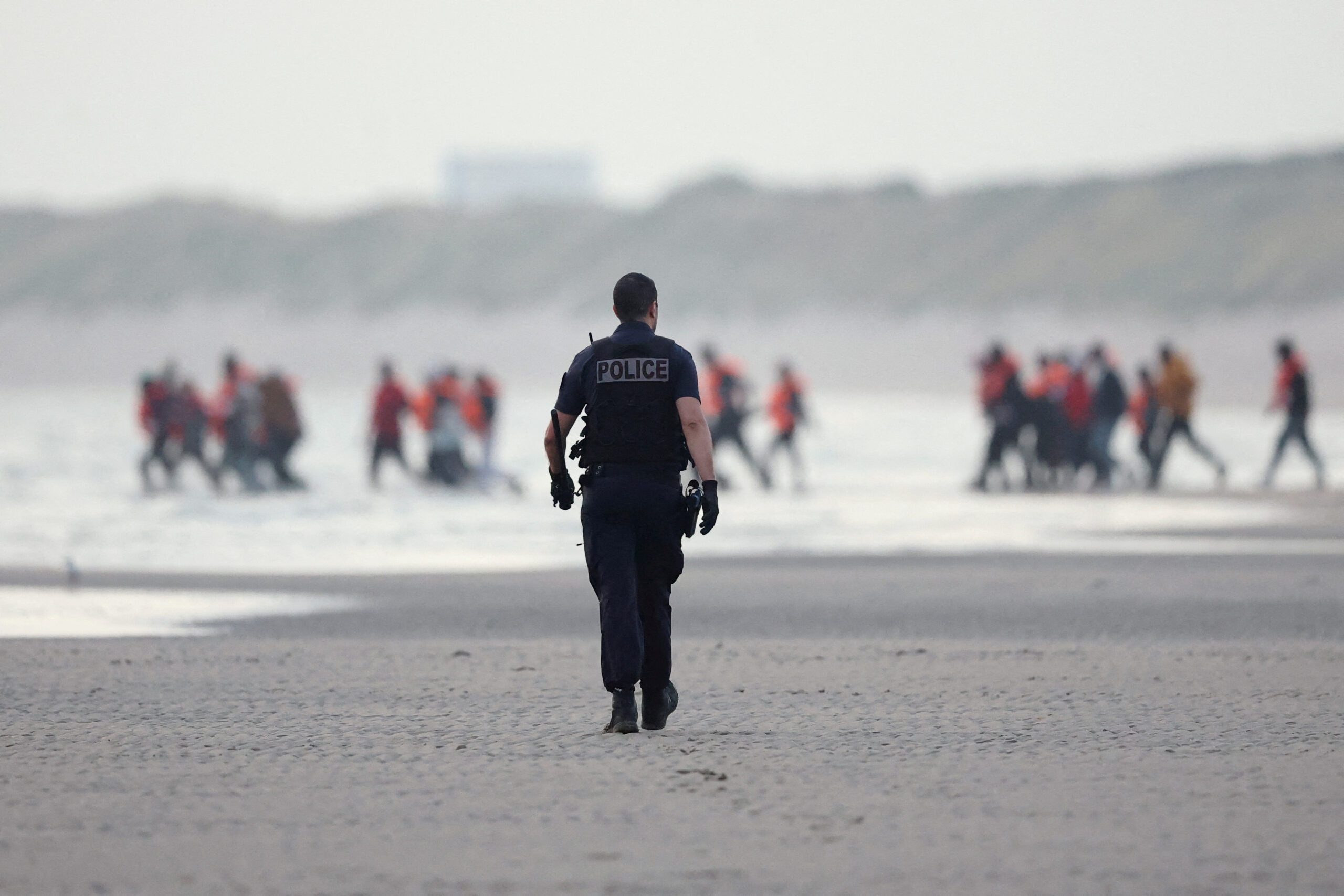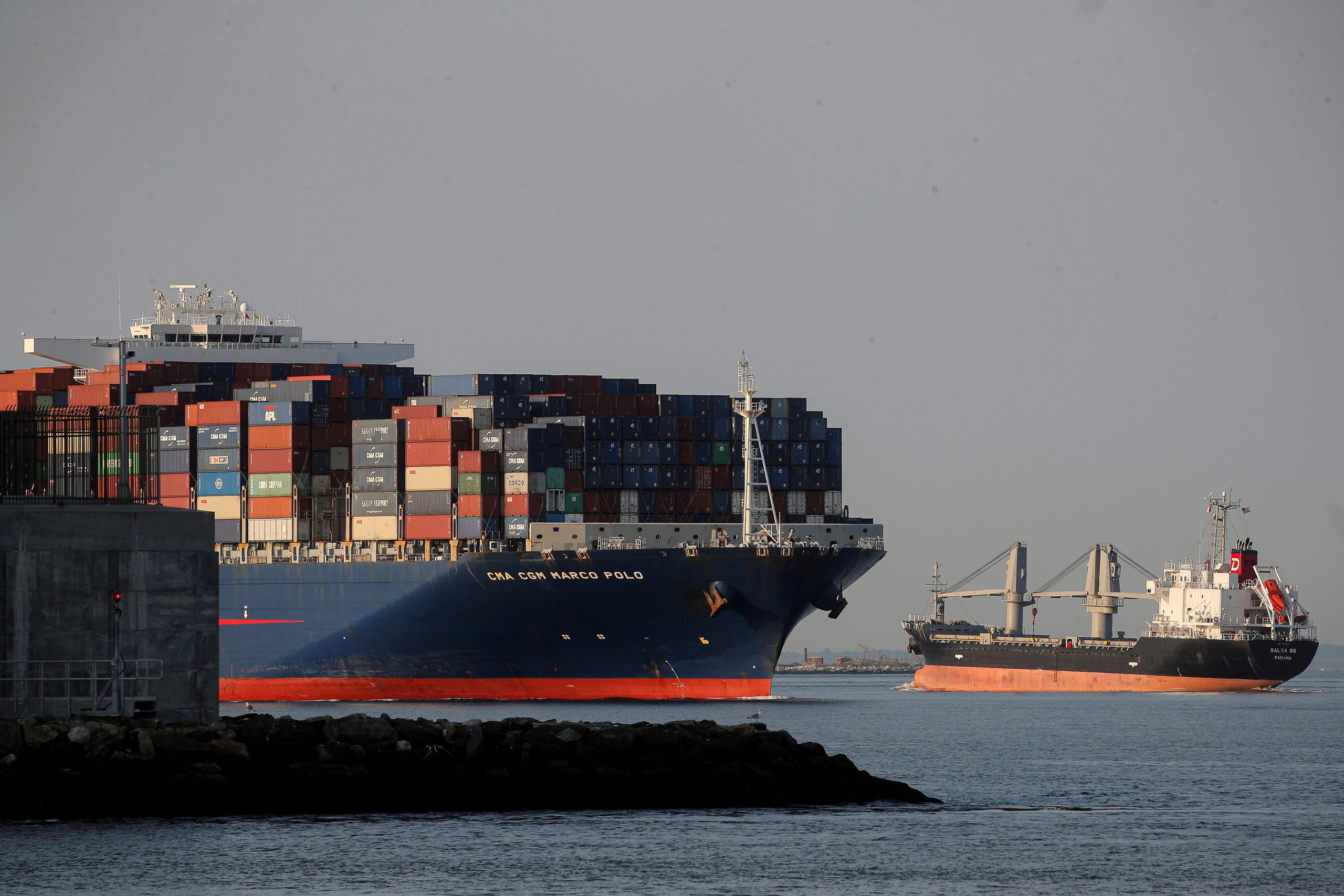The LNG carrier Christophe de Margerie. File photo: Shutterstock / Koptyaev Igor
The icebreaking LNG carrier Christophe de Margerie has set a new record for the fastest crossing of the Northern Sea Route for an unescorted ship during the month of July, according to its owner.
The vessel, which is owned and operated by Russian shipping firm Sovcomflot, set the new record while transporting a cargo of liquefied natural gas eastward through the NSR from the Yamal LNG plant at the Arctic port of Sabetta in Russia to the port of Tangshan, China.
During the NSR crossing, Christophe de Margerie covered a distance of 2,360 nautical miles in just 7 days and 17 hours from Sabetta to Cape Dezhnev, marking the easternmost point of mainland Asia. The time makes for an average speed of an impressive 12.8 knots.
Throughout the NSR passage, the Christophe de Margerie navigated independently without any icebreaker support. She docked in China on July 31 just 18 and a half days after departing Sabetta.
Sovcomflot said the passage demonstrates the economic efficiency of the once fabled route. It also marks the first of many regular shipments of LNG from Russia’s Arctic gas fields to the Asia-Pacific region.
“This remarkable, safe passage across the NSR has required the crew’s utmost attention and concentration,” said Igor Tonkovidov, Executive Vice President of Sovcomflot. “Ice conditions along the route were severe, especially in the East Siberian Sea, and the vessel experienced navigation in extended periods of limited visibility. The navigational and hydrographic situation within Arctic regions remains as challenging as ever.
“The crew of Christophe de Margerie was able to maintain a rapid yet safe speed for the tanker through effective organisation of bridge watch-keeping, highly skilled navigation, slowing the ship when approaching challenging ice fields and passing them at a safe speed, and moving reasonably quicker in areas of reduced ice cover,” Tonkovidov added.
Christophe de Margerie, with 172,600 cubic meter capacity, was delivered as the first in a series of fifteen icebreaking LNG carriers ordered to support the year-round transport of gas produced at the Yamal LNG plant. With 45 MW of power, the vessel can sail independently through ice of up to 2.1 meters thick.
In summer, gas produced at Yamal LNG will be transported eastward to Asia via the Northern Sea Route. In winter, the vessels will head westward routes to European markets.

 Join The Club
Join The Club











